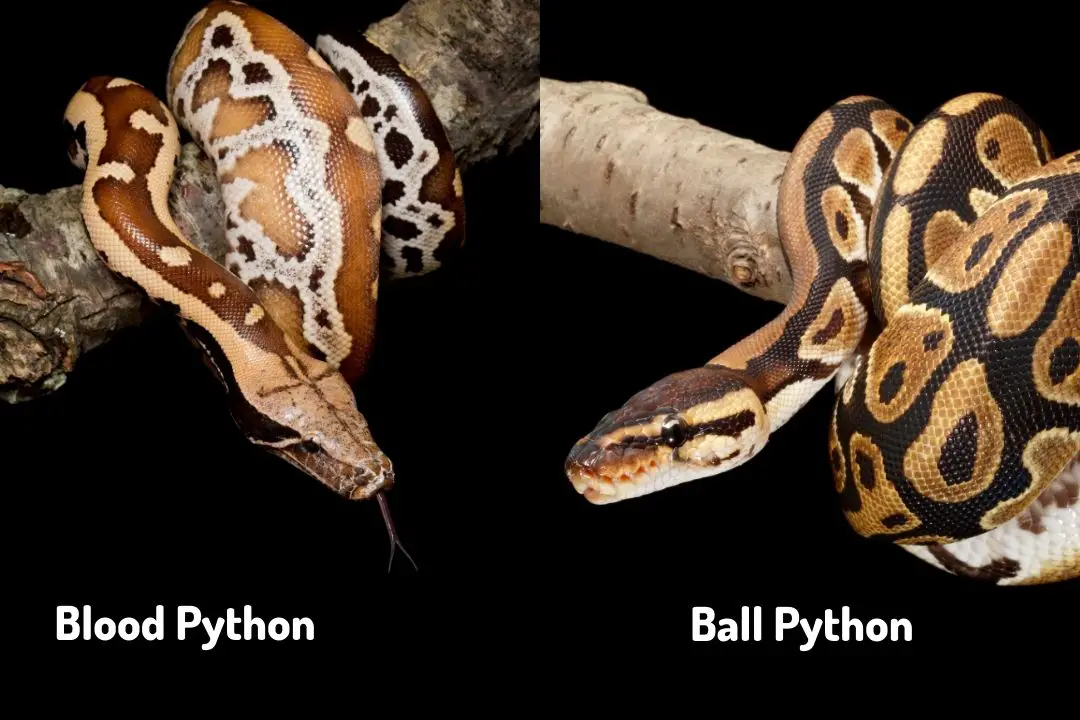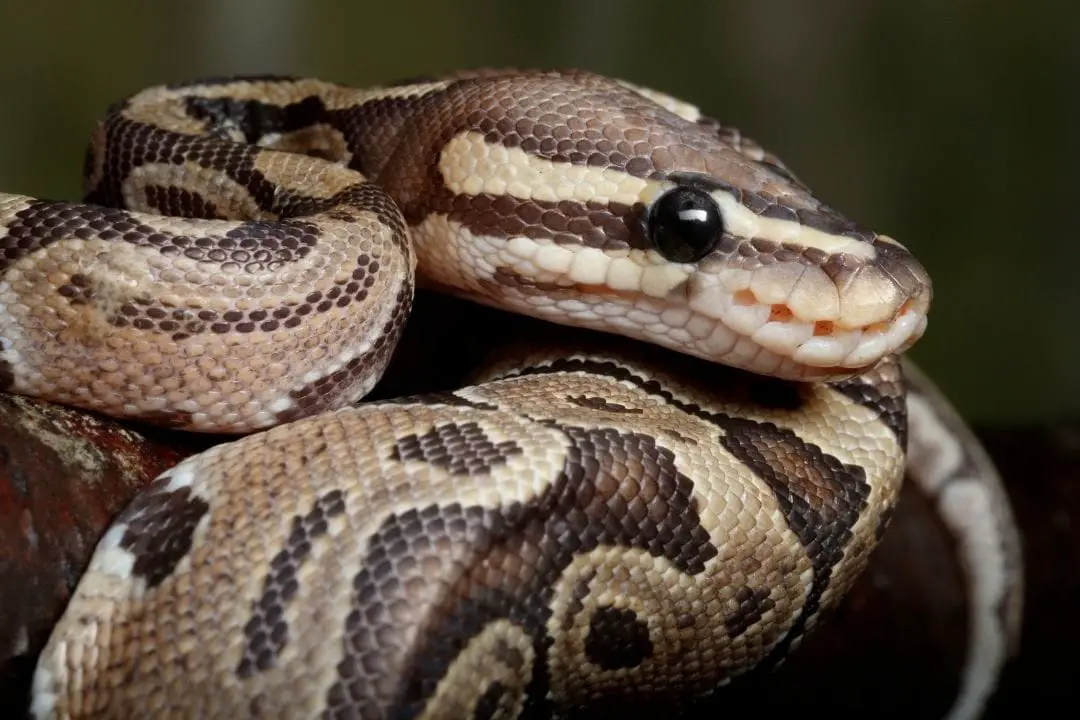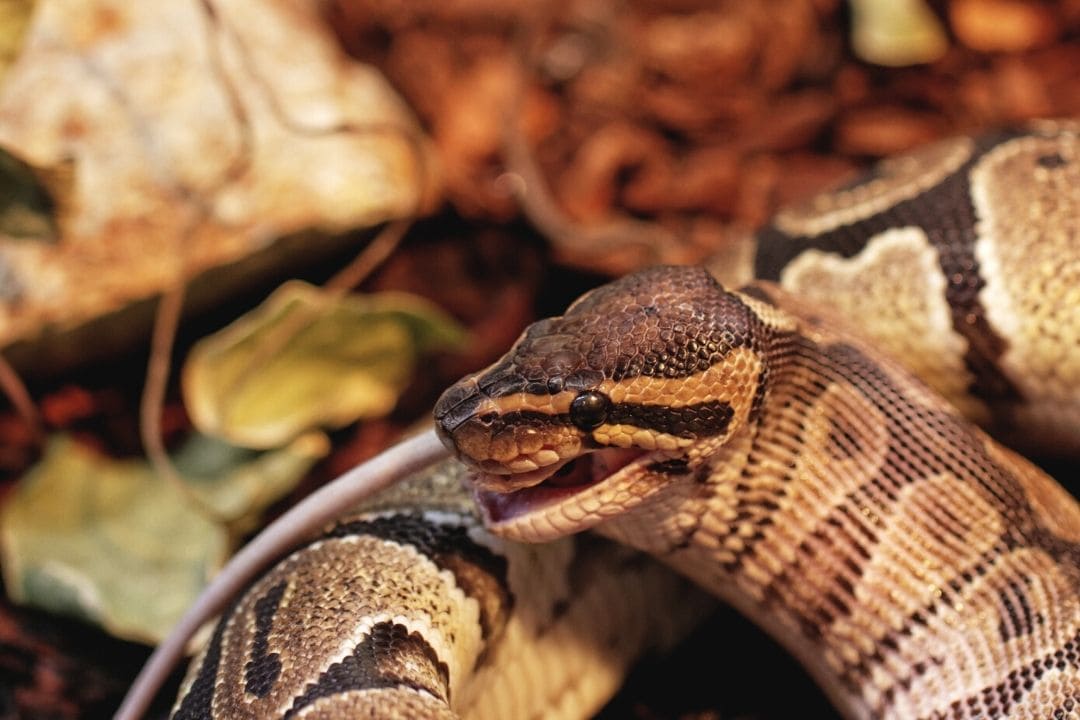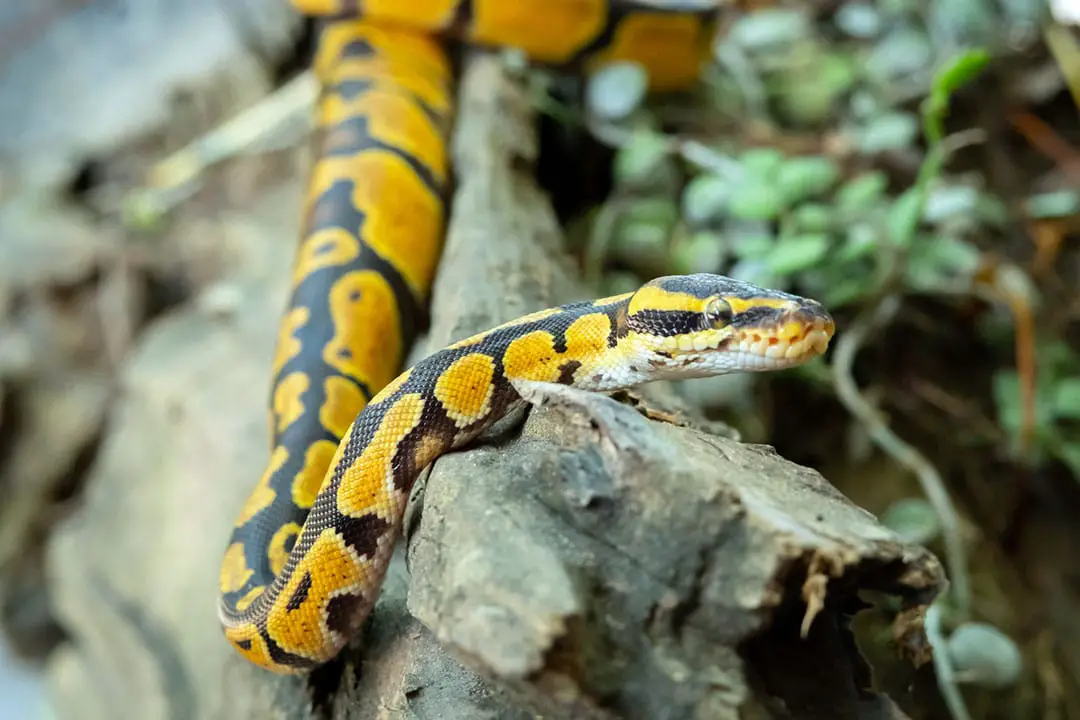Many people understandably confuse the various python species available in the pet trade.
In this article, we will go over the differences between the ball python (Python regius) and the blood python (Python brongersmai).
What is the difference between a blood python and a ball python?
Blood pythons are larger and heavier than Ball pythons. They come from different habitats and have different needs compared to ball pythons. Ball pythons are far more common in the pet trade as well.
1. Habitat
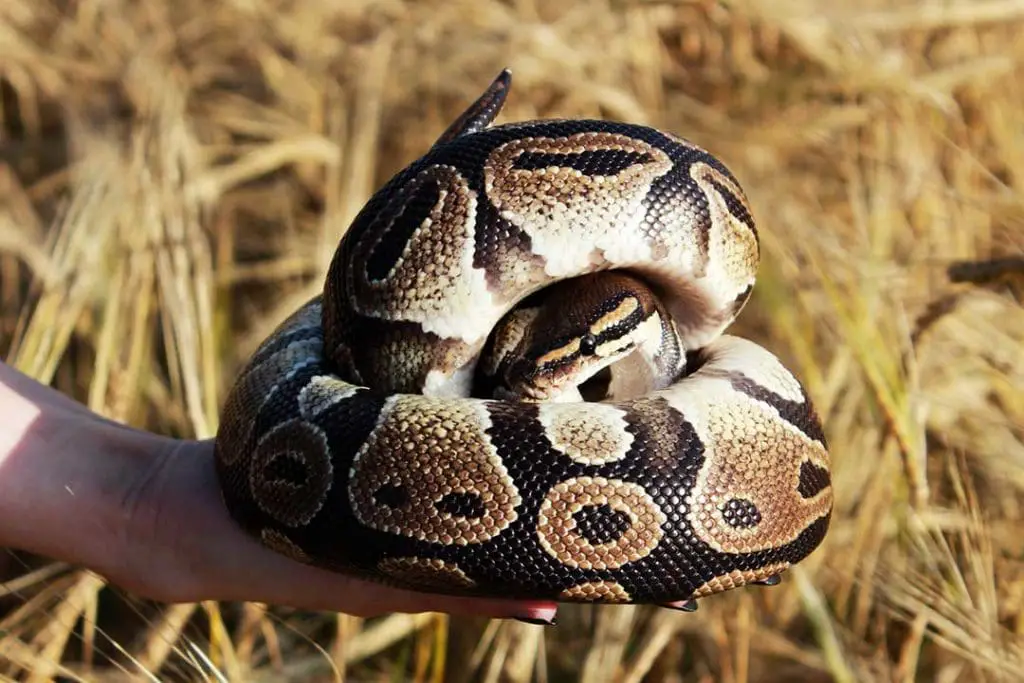
Both ball pythons and blood pythons are python snakes. They are in the same genus of old world constrictor snakes. Ball pythons are native to Central and Western Africa.
Blood pythons are native to South East Asia, mainly found in Thailand, Indonesia, Sumatra, and Malaysia. Ball pythons are found in grasslands and forests.
They can also be commonly found in and around human dwellings since they hunt rodents. Blood pythons are found in swampy, lowland areas. They are sometimes found in human-altered habitats such as palm oil plantations.
2. Size
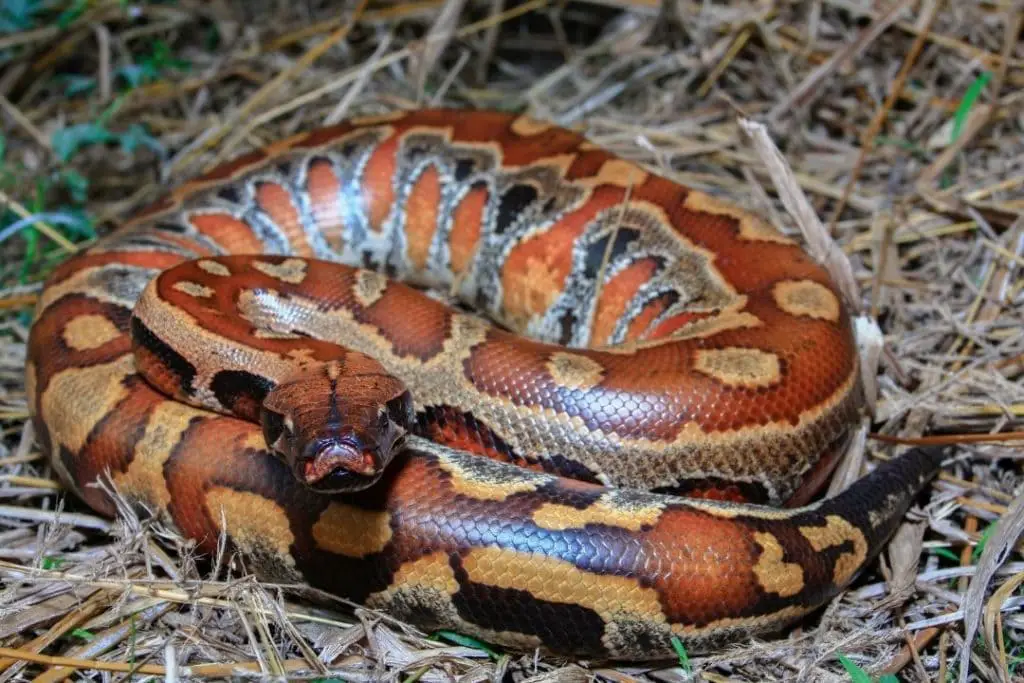
Both species of python tend to max out at a length of 6 feet, though some blood pythons can reach 8 feet. Males are typically shorter than females.
The big difference is in weight. A large adult female ball python will only weigh about 3-4 pounds as an adult. Blood pythons are much thicker snakes with far more weight.
Older animals can easily weigh 20 pounds without being overweight. This makes them more challenging to handle and keep. You need a very sturdy enclosure to hold these snakes, and possibly a helper when handling them.
3. Color
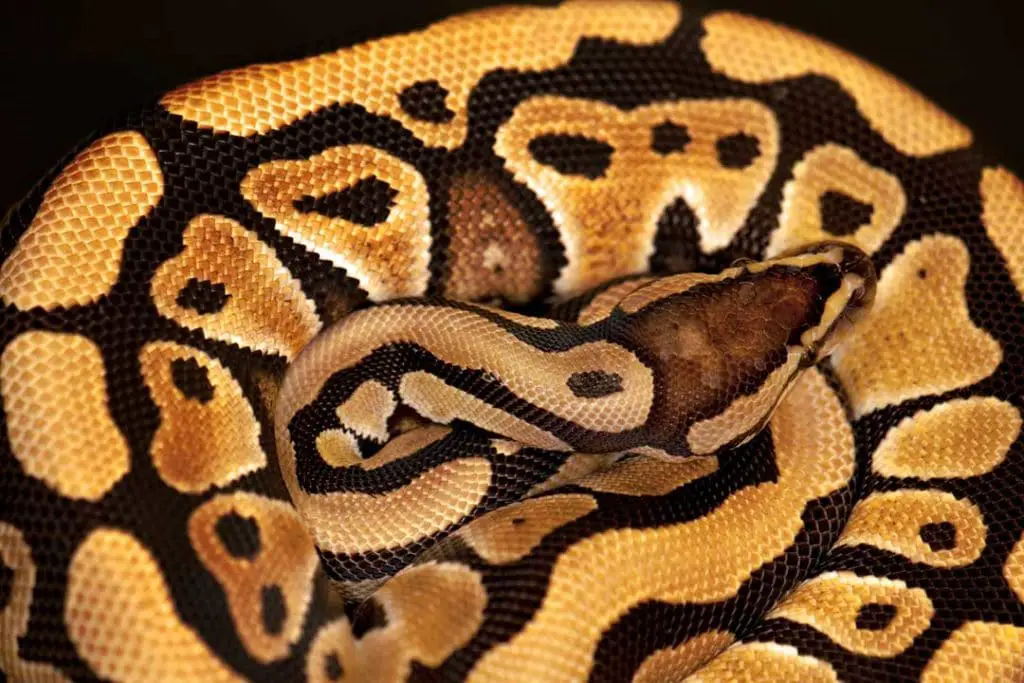
Ball pythons in the wild are mainly brown with accents of yellow, white, and black.
They have a pattern on their backs and sides referred to as “alien heads”. In captivity, you can find many colors and patterns.
These include everything from all-white snakes to yellow, pied, and even nearly black animals. You can find snakes with unique patterns that alter the shape of the markings or eliminate them entirely.
You can pretty much find a ball python in nearly any color or pattern you could desire.
A baby ball python looks virtually identical to how it will as an adult. Some patterns do develop further, but it is easy to tell what a baby will look like as an adult.
Blood pythons will hatch with a tan or yellow appearance. They are typically very dull as babies. At around 3 years of age, the red that gives the species its common name will become evident.
Many adult snakes can be varying shades of orange or red with white bellies and patterns. Blood pythons in captivity have been selected for more intense or deep reds as well as pattern differences.
4. Temperament
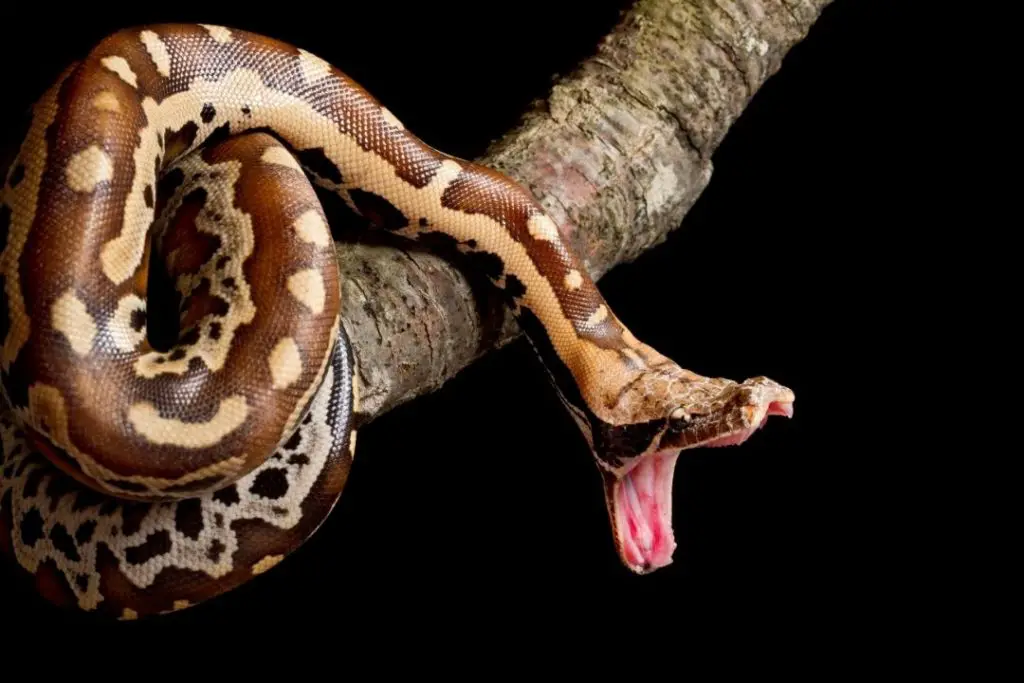
Here is a big difference. Wild-caught individuals have a massive difference in behavior between the species.
Ball pythons in the wild are typically so calm that people in their native range will simply pick up and move a wild snake if it is in an area it shouldn’t be.
They are typically very calm but are notably more nippy as babies. They will also not be as calm as a captive-bred animals. Captive-bred ball pythons are happy to chill out near humans.
Most will only ball up or try to flee if they are upset. Wild-caught blood pythons are notably bitey and unpredictable. They rarely calm down and have given the snakes a bad name in the pet trade.
Snakes caught in Malaysia are also notably more aggressive than their Indonesian counterparts. Captive-bred blood pythons are actually wonderful pets.
They can be very calm and docile as adults. Babies will be nippy and easily stressed, but this is true of most snakes. Blood pythons are notably head shy. If you try to touch the top of the snake’s head, it will violently jerk away.
This is a response to a potential predator. Some snakes will stop this once they realize you won’t hurt them. Otherwise, they will calm down with handling and become good pets.
5. Status in the Wild
Here is one of the biggest differences. Both snakes are frequently captive-hatched in their native range. This means that gravid females are caught in the wild and allowed to lay their eggs and hatch them in captivity.
The females and some of the babies are then released, while others will be put into the pet trade or the skin trade in the case of the blood python.
Ball pythons are not really being affected by human activity in the wild. They are doing great since they adapt to humans so well. This isn’t the case for the blood python.
They do very poorly if they are caught in the wild. They are at risk from both the pet trade and the skin trade. Many wild adult blood pythons are killed for their beautiful skins and turned into the many snakeskin products you see on the market.
Some are also farmed for this purpose. This is a threat to the species. If you want to own a blood python, only buy a responsibly bred animal from an ethical breeder.
A good breeder cares about the species and the health of their snakes. They will also only breed animals that do well in captivity and around humans.
Buying wild-caught or captive-hatched animals means depleting the wild populations of these snakes.
You will end up with a stressed, unhappy animal that is more likely to be unhealthy or aggressive.
Summary
Blood pythons and ball pythons have many things in common as relatively short, thick constrictor snakes in the same genus. However, there are many differences that set these animals apart.
Make sure to read my ball python care guide as well as my blood python care sheet if you are interested in getting one of these!
If you have owned either species or better yet, both, please leave a comment below comparing them in your experience. If you have any questions, be sure to leave them below as well.
